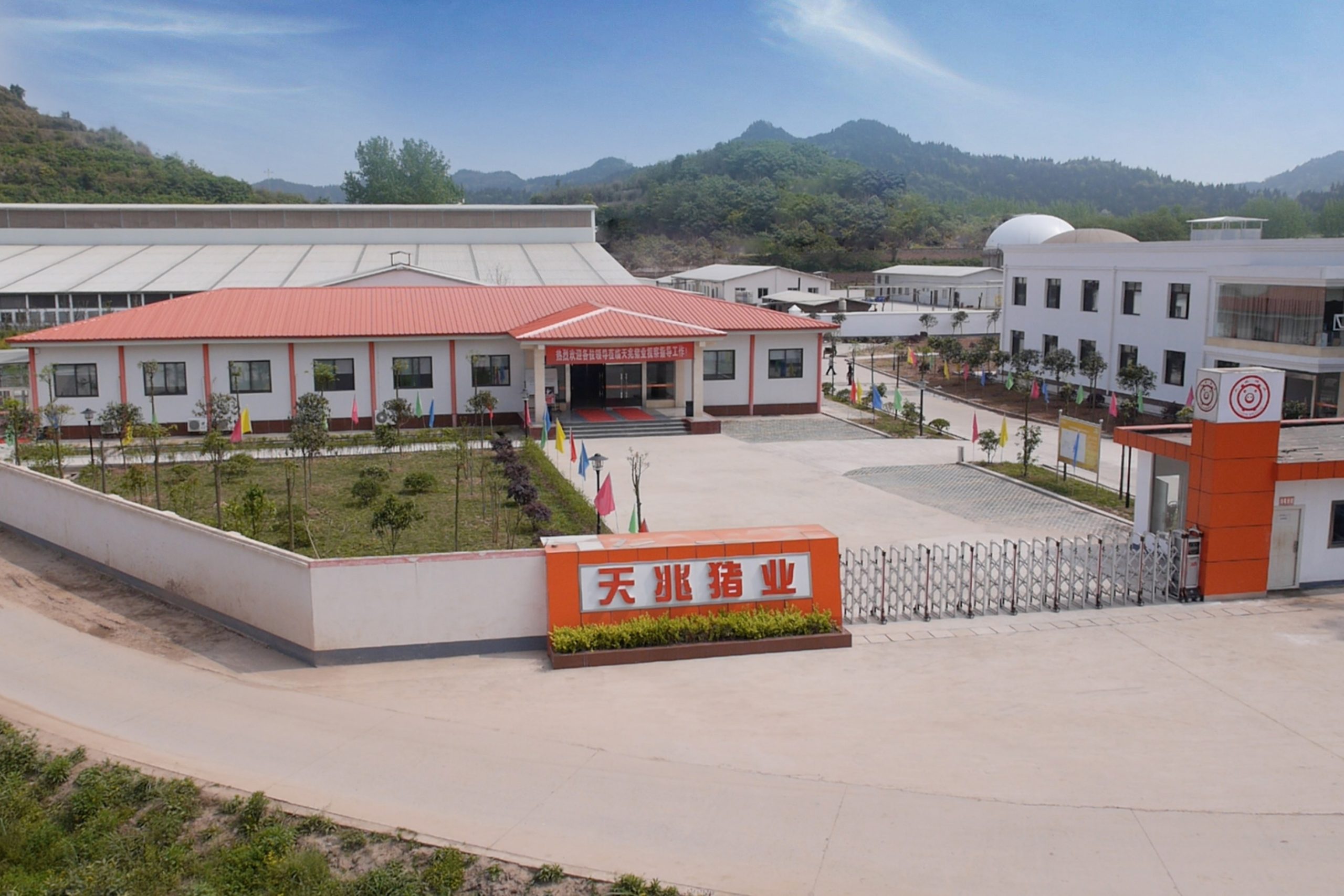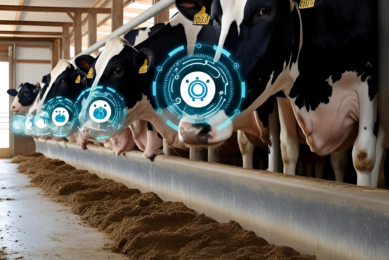Making large-scale pig farming sustainable

When thinking of large-scale livestock farming, attention soon turns to China. This is a vast market requiring efficient production practices where issues such as sustainability need to be at the forefront. Tianzow Breeding Group has taken this one step further by developing a pig production concept geared towards sustainability.
China used to be a land where backyard farming led the way. In the early part of the 21st century however, the country saw a tectonic shift towards giant integrators with a focus on efficiency and innovation. Tianzow Breeding Group is certainly no exception. Founded in 2004, the company is constantly developing its pig business through innovation activities.
Early focus on genetics
In early 2008, Tianzow imported 866 high-quality GGP (great grandparent) breeding stock including Landrace, Yorkshire and Duroc together with the genetic improvement techniques from Hylife in Canada. A shipment of 176 high-quality GGP Duroc and Pietrain from Canada in 2013 helped the company build its own sire line nucleus herd for genetic selection. Since then, Tianzow has been continually importing more than 150,000 straws of frozen semen from Canada. Through constant selection and evaluation of genetic progress, Tianzow is keeping up the pace of genetic improvement similar to its peers in North America.
At the end of 2017, Tianzow completed another importation of 1,000 GGP breeding stock including Duroc, Pietrain, Landrace, Yorkshire and the genetic improvement techniques from AXIOM in France. This allowed the company to build two independent genetic product lines which integrate a full system consisting of GGP nucleus herds, frozen semen and the genetic selection programme, based on world class technology from Canada and France. Tianzow currently owns a total population of about 80,000 productive sows which can annually produce over 500,000 gilts (GGP+GP+PS).

The company plans to introduce more world class genetic resources to strengthen its ability to provide a full variety of genetic products in order to better respond to different customer’s needs. The company hopes to increase its GGP breeding stock to 10,000 head, GP breeding stock to 200,000 head, and will make its annual capacity to produce 1.2 million pigs by the year 2022. Tianzow expects to provide a total solution for producing over 1 million F1 parent gilts as well as 25 million market hogs by the year 2028.
Yu’s design – new concept
The ambitions of the company don’t stop with world class genetics. Tianzow president, Mr Yu Ping, has created a new model of pig farm construction known as ‘Yu’s design’. Using his own architectural and management education background, he has combined practical experiences in engineering, industrial manufacturing and real estate with pig farm management and construction to develop a concept suited to the needs of modern pig breeding.
Yu’s design’s, which Tianzow completely owns the intellectual property rights to, has declared more than 80 patents at home and abroad, and obtained 53 patents issued by China’s state intellectual property office. Technologies which have gained intellectual property rights include building, ventilation and innovations which all have a focus on cost efficiency and a sustainable approach. Yu’s design, which is suitable for all geographical locations and climate environments, is based around the ‘3-no and 4-save’ principles.

The 3-no’s
- No sewage – All barns of Yu’s design are equipped with a scraper cleaning system, and all manure and urine are scraped into the gathering pond. The septic tank is equipped with a submersible mixing and cutting pump which pumps the faeces and urine into an ectopic fermentation bed for innocuous treatment.
- No odour – This is achieved by sterilising to eliminate the odours from pig barns via the patented air tower. This has the multiple function of temperature control and eliminating smells.
- No mosquitoes and flies – All holes connected with pig barn have fly and mosquito barriers installed. All waste such as dead pigs and sewage, etc. is promptly disposed of from the farm. Sick and dead pigs are treated through five processes: cutting, crushing, fermentation, sterilisation and drying. Specific high temperature fermentation microbes are added in order to make the steam produced in the treatment process volatilised naturally so that organic matter could be degraded into innocuous organic powder ingredients. The whole process is smokeless, odourless, and environmentally friendly.
The 4 save’s
- Save land – Yu’s Design farms are capable of producing 120,000 finisher pigs annually by using only 1.4m2 per head.
- Save cost – The investment in fixed assets is 100 million CNY (US$ 16 million), per sow this is 20,000 CNY per head.
- Save energy – The barns are designed and constructed with a fully enclosed heat insulation and prevention system. Cooling is achieved through underground tunnels and cool cells and air-recirculation is used to provide additional heating when necessary. Ventilation is naturally sourced from -20°C to 20°C with mechanical ventilation only used when necessary. Lighting is completely naturally sourced.
- Save labour – The farms operate on a ratio of 300 sows per farm staff, 3,000 nursery pigs per farm staff and 4,000 finisher pigs per farm staff.

4.0 global launch
Mr Yu introduced the global launch of Yu’s design 4.0 during the 2018 International Pig Veterinary Society Congress (IPVS), which was held in Chongqing. With already 212 farms in China adapting the 4.0 model, Pig Progress/Proagrica had the opportunity to visit one, see box ’Wusheng GGP farm’ and explore the technology being used first-hand.
As China charges forward in it’s technical developments across all industries, Mr Yu believes that in the future, application of the Yu 4.0 model will transform global pig farm construction and contribute to the development of standardised, specialised and intelligent pig farms to push the modern pig industry forwards.
Wusheng GGP farmWusheng farm is directly managed by Wusheng-Tianzow Husbandry Technology Co., Ltd. which is a sole corporation subsidiary of Tianzow Breeding. Located in Wusheng County, in the Sichuan province in Eastern China, the farm was constructed using the Yu’s design 4.0 model. It covers a land area of 120 mu (8 ha) with a floor area of 2,240 m2, in which the area of the pig barn is 1,700 m2. It breeds 4,400 GGP of Landrace, Yorkshire, and Duroc. The farm reaches 28 piglets per sow per year which is above the national average. Strict biosecurity measures are observed on the farm. From the front gate a walking path, with several disinfection pools is used for the staff and bringing materials in and out. This is secured with a fingerprint lock. A temporary disinfection storage room is used for sterilising and temporarily storing materials from outside. There is a vehicle disinfection pool for large-scale procedures such as weighing materials and car washing and a transferring station for vehicle cleaning and disinfection from the transfer of culled pigs. The p-Track biosecurity tracking system monitors pathogen carriers like people, tools and truck movements. It acts as a real time pathogen tracking kit that allows produces and veterinarians to simultaneously monitor the movements of any equipment, farm staff, and visitors that can pose a risk to the farm. To reduce the risk of infection, the farm’s 30 employees live and work at the facility. Their integrated house includes a kitchen, dining room, isolation room and staff living space. Each dormitory is equipped for 2 people.  The information wall leading the way down to the pig houses at the Wusheng Farm in Eastern China. Warm in winter and cool in summerThe temperature control systems in the pig barns ensure a steady temperature of 22-23°C in the winter and 27-28°C in the summer. The patented air tower fulfils the following four functions: firstly, fresh air can go through via the tower into the pig barn. Here, the mosquito and bird barrier prevents harmful organisms from entering the pig barn; secondly, a trench air-pumping pipeline system carries the 80% odour which is sterilised and deodorised by the square box; thirdly, the nature ventilation outlet or negative pressure ventilation is inside the air tower ; finally, even in extreme temperature conditions, the energy can also be recovered, the returned air can be utilised through a pre-heat and pre-cool room so that the air temperature and humidity improves as and when needed. The patented barn is 115 m in length, 68 m wide with a total area of 7833 m2. It can handle 2,200 sows by installing 1,960 gestation crates, 400 sets of delivery beds, an automatic environmental control system, an automatic water supply system, an automatic feeding system and a fire alarm system. The farms high-pressure washing system has hot and cold water and is 20 MPa. It is equipped with automatic constant power and is prepared for usage of four flushing guns at the same time. This saves 70% water and 65% time. Faeces and urine are cleaned into the manure collection tank by a scraper, and then solid and liquid are separated. The fermentation pad is where microbial strains are mixed with sawdust, husk and wood chips. The liquid portion from faeces and urine is sprayed to the surface of the fermentation bed where a machine stirs the mixture two times a day. The manure is fermented for about three days and once fermented it can be used as an ingredient for organic fertilisers. For biogas production, manure is degraded via anaerobic organism fermentation. The biogas liquid is temporarily stored in a biogas liquid tank. In case the manure degradation system breaks, there is a 6,000 m³ emergency black film pond for environmental protection. |











